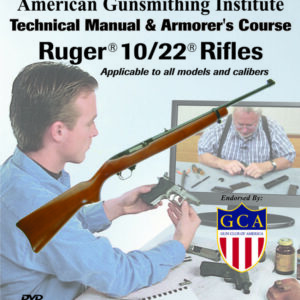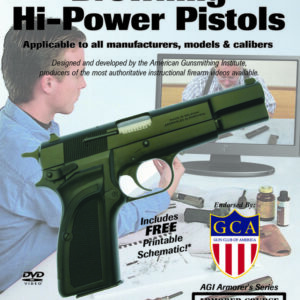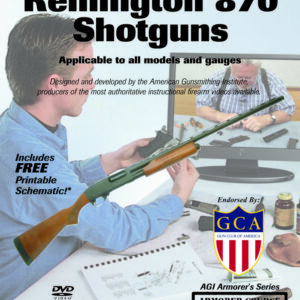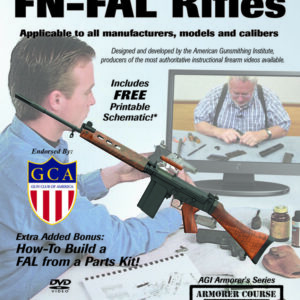Description
Join Master Gunsmith Bob Dunlap as he gives you the benefit of his expertise and experience again, this time with the ubiquitous Colt Model P of 1873, the World Famous Single Action Army. This is of course the gun all of our western heroes of screen, radio (for those of you old enough), and TV made famous in their Oat Operas. Everything you need to know about getting your gun apart and back together with no left over parts.
Among the items covered are:
History
- How long has the gun been produced
- When was the gun redesigned
- What the difference is between: the old style black powder base pin stop, and the modern smokeless powder base pin stop
- The old and new style Ejector Rod buttons
- Old and new style hand
- Colt and the European copies
Design and Function
- Bob uses two different cut-a ways to show you the cocking cycle
- What does the hand do, and how does it do it
- What is the proper sequence for the hand and bolt to work together
- What is “Over Cock?”
- What causes the cylinder to time up correctly for loading and ejection
- Safetys on the Colt, U.S. Arms, Uberti, and Armi San Marcos.
Disassembly
- One and two piece grips discussed
- Grip frame and mainspring removed
- Function of the Black Powder frame base pin screw shown
- Cylinder removed
- Interaction of bolt and hammer cam shown in place
- Removal of trigger/bolt spring, trigger, and bolt shown
- Hammer removal shown and order of disassembly discussed
- Interaction of bolt and hammer cam shown out of gun
- Loading gate removal shown
- Function of the plunger demonstrated, and correction of floppy gate
- Removal and disassembly of the ejector shown
Cleaning & Lubrication
- AGI cleaning & lubrication methods shown, along with the reasons for their use
Reassembly
- Making sure you have no parts left over
Common Problems and Their Solution
- Proper cylinder timing and three types of hands discussed
- Correct functioning of the first and second steps of the hand discussed
- Correcting hand length (stretching) shown and necessity and method of heat treating explained
- What is Transitional Bind, and how do you correct it
- For competition guns (Cowboy Action or Quick Draw), do you want your gun timed slightly slow or fast
- In what order (trigger pull, hand timing, and bolt timing) should you make your corrections
- The Trigger job explained and shown
- What are Positive, Neutral, and Negative trigger systems, and why you want one and not the others
- What is a modified Colt trigger system and how it saves your seat tip and hammer notches
- Should you modify the Bolt/Trigger return spring to reduce the trigger pull weight
- Why are the newer springs legs separated all the way to the screw hole
- What is the proper travel for the bolt
- Proper angles for the sides of the bolt, and fitment in frame slot and cylinder notch
- Modifying the bolt leg to correct timing
- What is the minimum acceptable depth of bolt/notch engagement
- How to contour the top of the bolt to stop throw-by
- Special bolt top contour for maximum speed of engagement for speed shooting
- How to increase depth of engagement
- Recontouring the base of the bolt to reduce spring stress and breakage
- Recontouring the hammer spring to reduce cocking effort
- Cylinder end shake, what is it and how do you get rid of it.
- How the one piece grip fits
- Detail of the Uberti safety system
If you noticed how often the terms “explanation,” “demonstration,” “what,” and “how to correct” and are used, you may be getting some idea of why this course is necessary for any owner of the Colt Single Action Army Revolver or its clones.




